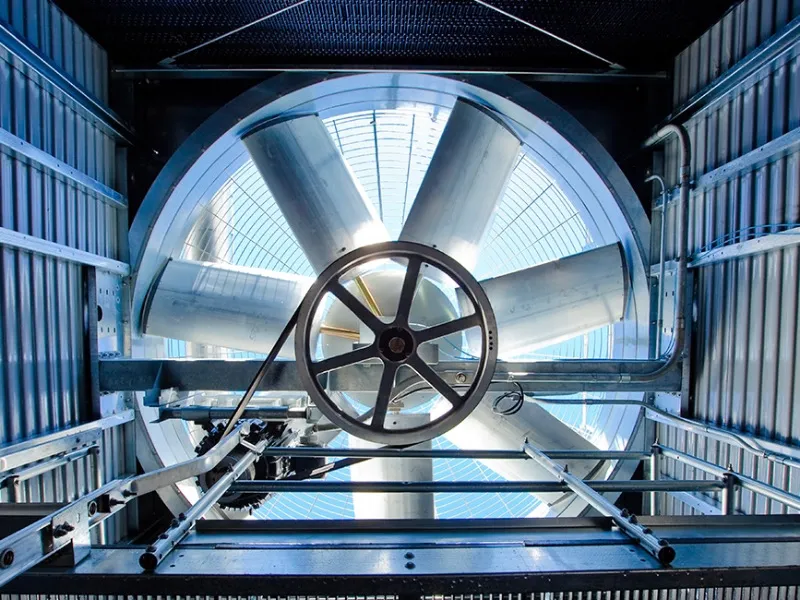- Server rooms are teeming with high-performance servers, storage devices, and networking equipment, all of which generate substantial amounts of heat.
- Companies are constantly developing new technologies to address the challenges of cooling server rooms while improving energy efficiency.
In the intricate world of IT infrastructure, server rooms are the silent workhorses that keep our digital lives running smoothly. One of the most critical aspects of maintaining these hubs is managing their temperature. But why exactly do server rooms need cooling, and what happens when this necessity is overlooked?
The heat problem: Why cooling is non-negotiable
Server rooms are teeming with high-performance servers, storage devices, and networking equipment, all of which generate substantial amounts of heat. Without adequate cooling, this heat can accumulate rapidly, leading to several serious issues.
In August 2017, Delta Airlines experienced a massive system outage that halted flights worldwide. The root cause was a power failure in a server room, compounded by inadequate cooling. As temperatures soared, the airline’s IT infrastructure became overheated, leading to critical failures. This incident highlighted how essential cooling systems are in preventing operational disruptions.
Cooling systems in server rooms work to dissipate this heat, ensuring that equipment remains within safe operating temperatures. Without such systems, the risk of overheating increases, which can lead to hardware failures, system slowdowns, and even complete shutdowns. This is why cooling is not just a convenience but a necessity for maintaining operational integrity and efficiency.
Also read: NatWest’s $2.94B Metro Bank deal amid 16% profit drop
Also read: Navigating the digital maze: Mastering IT GRC
Real-world innovations in cooling technologies
The quest for efficient cooling solutions has led to several innovative approaches in recent years. Companies are constantly developing new technologies to address the challenges of cooling server rooms while improving energy efficiency.
Google has invested heavily in advanced cooling technologies for its data centres. One notable innovation is their use of machine learning to optimise cooling systems. By analysing data from temperature sensors and adjusting cooling accordingly, Google has managed to significantly reduce energy consumption while maintaining optimal server temperatures. This approach not only enhances performance but also supports Google’s commitment to sustainability.
And Liquid cooling has also emerged as a more effective alternative to traditional air cooling. In this system, servers are cooled by circulating a special liquid that absorbs heat directly from the components. Companies like Intel and Facebook have been experimenting with and implementing liquid cooling to manage the heat generated by increasingly powerful hardware. This method is highly efficient and can reduce the overall cooling requirements, leading to significant cost savings and energy efficiency.
The consequences of neglecting cooling
Ignoring the need for adequate cooling can have severe repercussions. The most immediate consequence is the risk of hardware damage. Overheated servers can suffer from reduced performance, increased error rates, and even permanent damage to critical components.
In 2019, British Airways faced a major IT failure that disrupted flights and customer services. The root cause was traced back to a combination of power issues and cooling failures in their server room. The incident demonstrated how essential cooling systems are in maintaining the stability and reliability of IT operations. The financial and reputational damage from such failures can be substantial, emphasising the importance of investing in effective cooling solutions.
Moreover, inadequate cooling can lead to increased operational costs. Overheated equipment can require more frequent maintenance and replacement, leading to higher long-term expenses. By contrast, a well-cooled server room minimises these risks and contributes to a more stable and cost-effective IT environment.
Future trends and considerations
Looking ahead, the demand for efficient cooling solutions will only grow as technology advances and data centres expand. Innovations in cooling technologies, such as immersion cooling and advanced air flow management, will play a crucial role in addressing the challenges of heat management.
Immersion cooling, where servers are submerged in a non-conductive liquid that absorbs heat, is gaining traction as a cutting-edge solution for high-density computing environments. Companies like Submer and Asperitas are at the forefront of this technology, offering solutions that promise improved cooling efficiency and reduced environmental impact.
Cooling is not just an accessory but a fundamental requirement for server rooms. By understanding the critical role of cooling and investing in advanced technologies, organisations can ensure the reliable operation of their IT infrastructure, prevent costly failures, and contribute to a more sustainable future. The evolution of cooling technologies reflects the ongoing commitment to optimising server room environments, safeguarding performance, and supporting the digital backbone of

